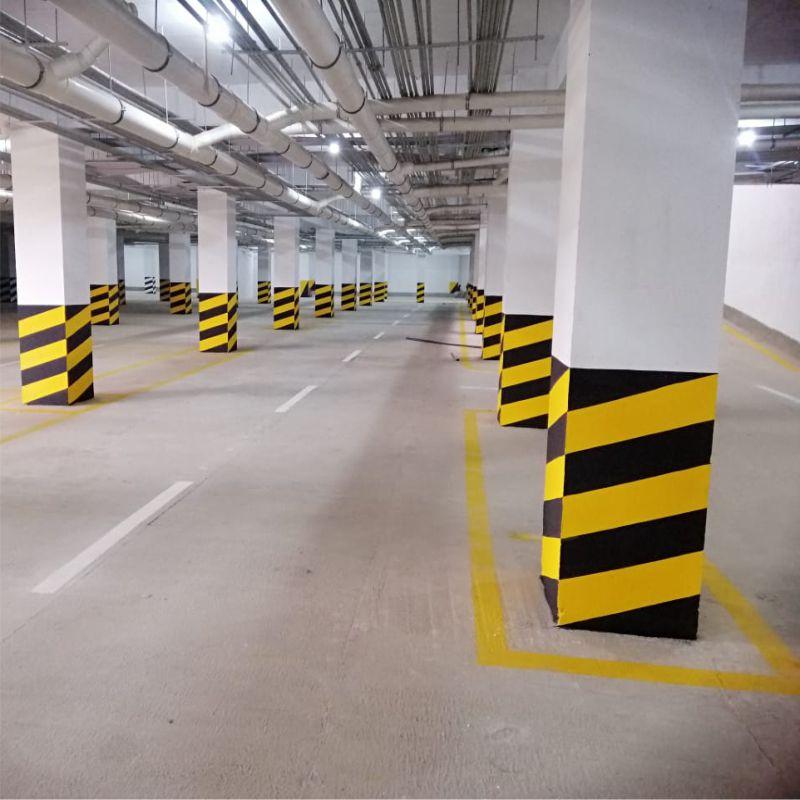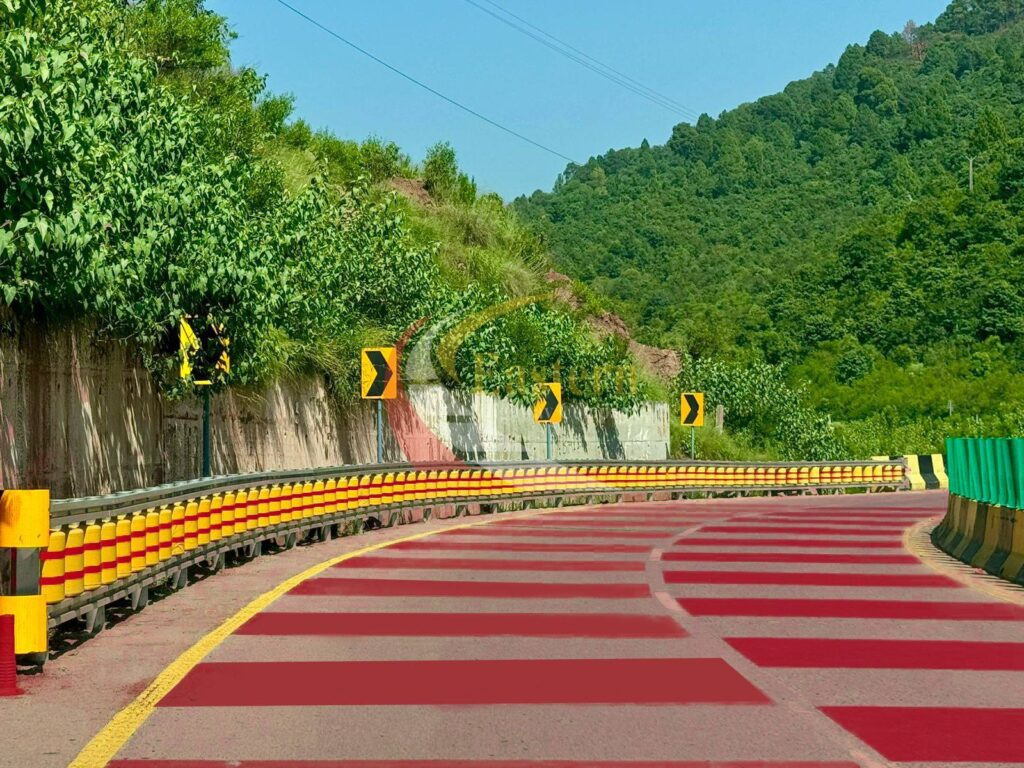Discover the different types of pillar paint to improve the look and strength of your building. Learn about popular paint options that are available in the market!
Pillars are important parts of any building, providing strength and support. To keep them looking good and protected from damage, the right type of paint is essential. Since pillars are also very noticeable, choosing the right paint can enhance their appearance while ensuring long-term protection from environmental factors like moisture, dirt, and wear.
The paint industry is growing rapidly, with the global market expected to reach $204.83 billion by 2027. In fact, 40% of all paint used worldwide is for architectural purposes, which includes pillars, walls, and other structural elements. Properly painted pillars not only boost the visual appeal but also increase the lifespan of a building by preventing cracks and erosion.
In this blog, we will explore the various types of pillar paint available and how they can improve both the durability and look of your building’s pillar.
What is a Pillar?
It is called an ornament or monument used to support a building. It is usually made of a tall vertical structure of stone, wood, or metal in a tall vertical structure.
In most cases, buildings with two or more stories can be built with load-bearing walls. But in case of weak soils, large spans, and pillars are considered important especially to give an aesthetic look to buildings. Mostly these pillars are made up of concrete and steel.

Pillars have been used for centuries to add beauty to architectural design. Different techniques used for pillars have developed by adding advancements in engineering Such as:
- Stone: In ancient times, stone pillars were widely built. Granite, limestone, and marble were used as pillar materials.
- Concrete: Concrete pillars are used in modern construction with compressive strength and steel bars to enhance the pillar’s load-carrying capacity.
- Brick: Brick pillars have good structural stability and are commonly used in residential or smaller-scale constructions. To build load-bearing pillars Bricks are stacked and mortared.
- Steel: For pillar construction, it is a versatile choice that can be fabricated in different shapes and is good for carrying heavy weight ratios.
- Marble: For enhancing elegance and beauty, marble can be easily carved and polished to create stunning decorative elements.
What is a Pillar Paint?
As a part of houses or buildings, these pillars are also painted to enhance beauty. In routine. we see neutral colors like slate grey, or charcoal, or sometimes white mostly in big buildings, or for interiors, we mostly see beige or cream paints.
Before picking a pillar paint finish, there are a couple of factors that are considered important to make final decisions:
The amount of traffic that a room has, is the most important consideration when it comes to choosing a coulum paint finish. Pillars in high-traffic areas should have durable finishes like semi-gloss and satin. Whereas low-traffic spaces will do well with matte paints.
Fewer glossy pillar paints are highly recommended for patchy areas or materials while you can go bold with a glossier paint finish if you are not facing surface blemishes. No-shine of flat or matte pillar paints are highly recommended for a light place. But if you are looking to brighten up a dim place you should choose glossy paints.
Types of Pillar Paint:
Different types of paints are used to paint pillars.
Oil-Based Pillar Paints:
It is a durable and reliable choice with a long lifespan without showing signs of wear and tear, suitable for house with heavy traffic. Oil-based paints are mostly used for painting pillars. Oil-based pillar paint can be used on any surface and is frequently recommended for its rich finish and incredible durability and available at reasonable prices.
This paint may take time to dry but the best option for removing stains with attractive glossy looks with a smooth finish. On the other hand, it is also difficult to wash, and Volatile organic compounds (VOCs) used in this paint can be harmful to breathe in.
Water-Based Pillar Paints:
Water-based pillar paints are commonly used for pillar painting. Water-based paint is a quick dry pillar paint and easy to apply in several coats in a single day. Water-based pillar paints are also much easier to clean up and it does not give any harmful fumes. It is really easy to clean up, and also doesn’t require any pre-treatment but is a bit pricier than oil-based pillar paints. Sunlight also doesn’t harm this color with time passages.
Latex Pillar Paint:
Due to its rubber-based nature, it is called latex paint. Latex paints are easier to clean up and perform better on your walls and are the best choice for exterior painting projects. Latex paints are made using a water-soluble base, built on acrylics and vinyl, and can be easily cleaned up with water and mild soap. Exterior latex pillar paints are good options for susceptible stainable.
Be careful, Latex pillar paints are not good for steel or raw wood pillars. However, it is a good option for less odor with fewer VOCs, and fast drying time.
Acrylic Pillar Paints:
Acrylic paints are the best option for painting pillars in schools or art places, especially media places for staining, fine brushwork, water media, glazing, and many other techniques. Their high durability and fast drying time reduce cracking and flaking.
The most popular paint today is Acrylic paint which is constructed from pigments that are chemical-based, which means that they are water-resistant when dry. Acrylic paint gets easily dried and best to use for smaller pillars as compared to big pillars.
Acrylic is chemical-based and latex is water-based. Due to the availability of chemicals, this pillar paint will contract and expand better. The thing that you should know is, this coloumn paint is expensive for chemical bases.
Enamel Pillar Paints:
Enamel paint is often categorized as hard, glossy, and utilized in small quantities to add vibrant coloring and durability to small craft projects. However, its main purpose is for appliance finish touch-ups. It is the ideal choice if you are looking for something that offers reliable protection and yields a hard shell when dry.
Final Thoughts:
Merely, many architects advise to use both latex- and oil-based paints as they think it works well with fiberglass columns. For painting concrete pillars pacing paints are best choice. Choose a combination of primer and paint product If you are painting wooden porch pillars.
You should also keep some points in mind before choosing a pillar paint:
- First, high-quality paint may not actually be more expensive as if you buy cheap you will have to do many coats.
- You should choose pillar paints according to traffic areas and especially pillar materials.
- Do not forget ambiance and environment before choosing paints. And, to achieve the best results, you should stick to what the specific paint is designed for.
- Do not try to use exterior pillar paint on interior pillars as it is more prone to scratches and scuffing as it releases more VOCs after getting dry which is harmful to health.
Frequently Asked Questions:
What is a 3D pillar painting?
3 DPillar painting is adding some artwork while painting a pillar.
Can we use the same pillar painting as we use wall paints?
Yes, we can use the same wall paint to paint the pillars too but it is better to ask your contractor or painter about the best option.
What are commonly used pillar paint colors?
Mostly white, grey, and light shades are used to paint pillars as these paints look quite decenct and match with every color combination making the look updated everytime.
School pillar paints are different from random pillar paints?
No, paints are chosen on basis of different criteria. Mostly flat pillar paints are used in schools or decorated pillars to create beauty and to get attention of kids for their knowledge purpose.









